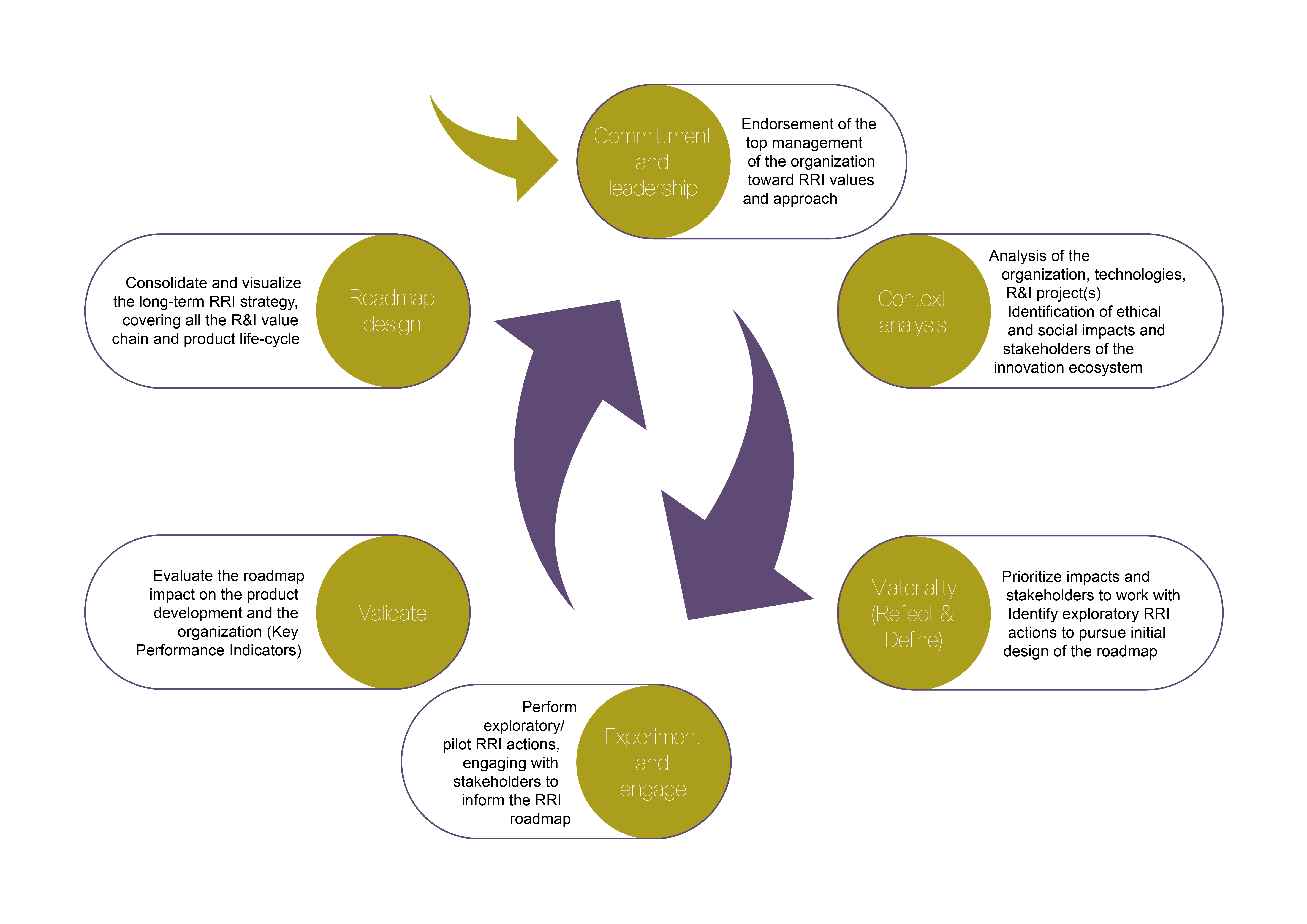3.5.1 Introduction to RRI and stakeholder engagement
Course subject(s)
Module 3. How: Stakeholder engagement and gender dimension
Do you remember this picture?

So we have the following starting points for stakeholder-engagement within the framework of RRI.
- Commitment and leadership for RRI. This also means that the company articulates values like environmental sustainability, inclusiveness, safety, privacy as part of CSR-policies.
- Analysis of Ethical, Legal and Social aspects regarding the innovation (and related process)
- Materiality: Identification and understanding of priorities with respect to the context of social responsibility in which an organization operates. This reflects the economic, social and environmental factors that have to be considered.
Materiality analysis
To find out more about a materiality analysis, check this document
Implications for stakeholder engagement
An RRI-approach thus has implications for the way to conduct stakeholder-engagement as it emphasizes:
- Inclusivity of stakeholders.
Identify the urgency they feel for their issues, the legitimacy of their interest and the power they have to impact on your organisation .
Do not ‘ignore’ opponents - Building trust
- Stakeholders should have a say in decisions about actions that could affect their lives or essential environment for life.
- Providing information to stakeholders that respond directly to their expectations and interest
- Transparency and responsiveness: show what you do with the results of the process in terms of innovation and dealing with conflicting values (like privacy versus security, or animal welfare versus sustainability, or working conditions versus frugal innovations).
If Corporate Responsibility is about minimising negative and maximising positive environmental and social impacts, then stakeholder engagement is one of the core skills and key activities which enables this to happen successfully and effectively.
(Source: https://www.cranfield.ac.uk/som/research-centres/doughty-centre-for-corporate-responsibility/seven-steps-to-corporate-social-opportunity)
Overview of section 3.4
From the above, it is clear that conducting ‘ RRI-proof’ stakeholder is difficult.
Values, risk-perception, concerns will differ in each country, from institution to institution or from interest group to interest. Some of them will be conflicting. Nevertheless, RRI-way of stakeholder engagement has to be included in the culture of the organisation.
The readings will give you more insight.
In this section we will explore some, maybe new and unconventional, approaches to look at values.
- Emotions to identify societal values
- Frugal innovations for the low-income groups (in India also know as Jugaad)
- The importance of accurate representation.
We will end this section with some examples and inspiration from industry practices.

Responsible Innovation: Building Tomorrow’s Responsible Firms by TU Delft OpenCourseWare is licensed under a Creative Commons Attribution-NonCommercial-ShareAlike 4.0 International License.
Based on a work at https://online-learning.tudelft.nl/courses/responsible-innovation-building-tomorrows-responsible-firms/.



